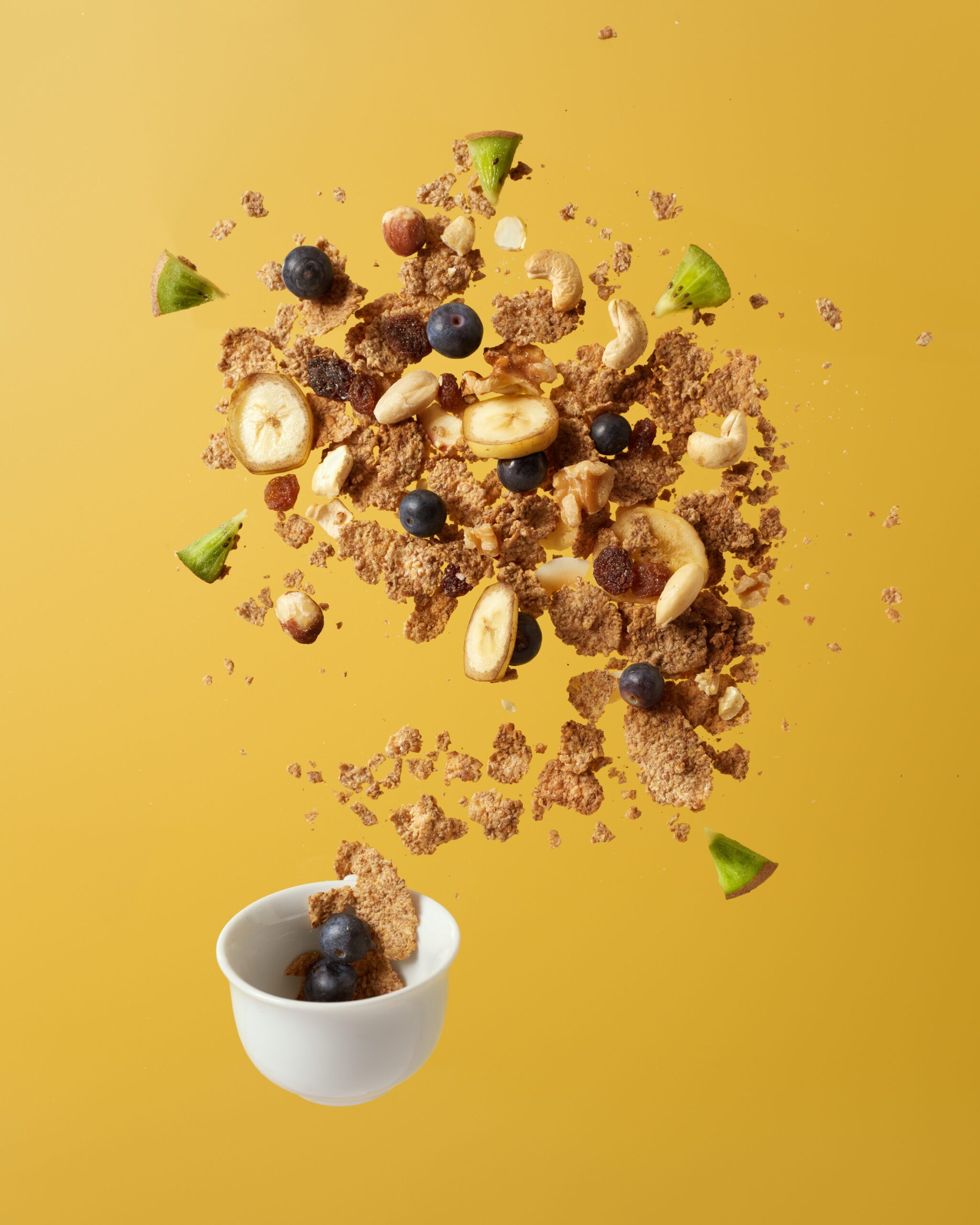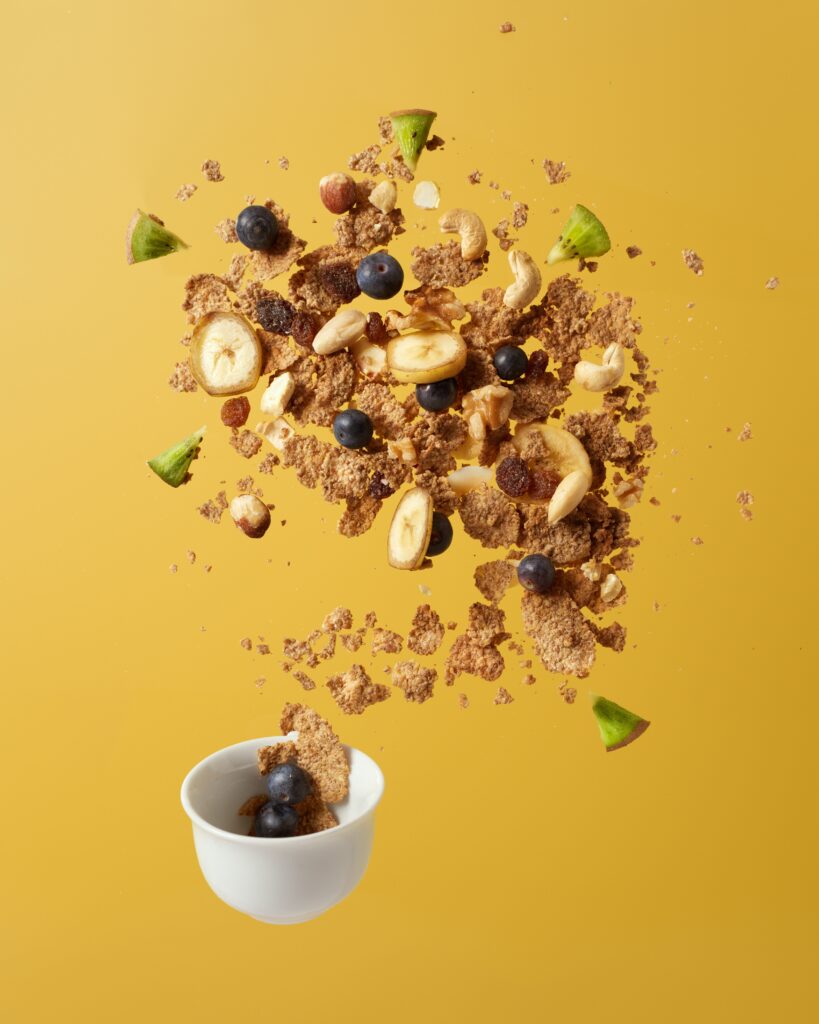
Are you stumped on how to prepare delicious meals for your family while catering to their nut-free diet? Look no further! In this article, we will explore some simple yet flavorful recipes and tips for cooking for a family with a nut-free diet. From breakfast to dinner and even dessert, we have got you covered with creative alternatives and mouthwatering options that will satisfy everyone’s taste buds. So put on your apron, grab your spatula, and get ready to whip up nutritious and nut-free meals that your family will adore!
Understanding Nut Allergies
Nut allergies are a common and potentially serious type of food allergy that can affect both children and adults. It is important to have a clear understanding of nut allergies in order to create a safe and inclusive environment in your kitchen. There are different types of nut allergies, with peanut and tree nut allergies being the most common.
Types of nut allergies
Peanut allergy is one of the most common food allergies and often lasts for a lifetime. It is important to note that peanuts are legumes, not nuts, but they can still trigger severe allergic reactions. Tree nut allergies, on the other hand, include allergies to walnuts, almonds, cashews, hazelnuts, pistachios, and others. Individuals with these allergies must avoid all types of tree nuts.
Common symptoms of nut allergies
If you or a family member has a nut allergy, it is crucial to be aware of the common symptoms. Mild symptoms may include itching or tingling in the mouth, hives, or a slightly runny nose. However, more severe symptoms can arise, such as difficulty breathing, tightness in the throat, vomiting, or even anaphylaxis – a life-threatening allergic reaction. It is important to seek immediate medical attention if any severe symptoms occur.
Cross-contamination risks with nuts
Cross-contamination can occur when allergens, in this case nuts, come into contact with other foods. This can happen through shared cooking surfaces, utensils, or even the air. These risks can make it difficult for individuals with nut allergies to safely enjoy meals in environments where precautions are not taken. Therefore, it is crucial to create a nut-free kitchen in order to mitigate cross-contamination risks.
Creating a Nut-Free Kitchen
Transforming your kitchen into a nut-free zone is a necessary step to ensure the safety and well-being of individuals with nut allergies. Follow these key steps to create a nut-free kitchen:
Clearing out all nut products
The first and most important step in creating a nut-free kitchen is to remove all nut products. This includes any jars of nut butter, whole nuts, trail mixes, or baked goods containing nuts. It is recommended to check all kitchen cabinets, refrigerator, and pantry shelves to ensure that no nut products remain.
Reading food labels carefully
When grocery shopping, it is crucial to carefully read the ingredient labels of all packaged foods to identify potential allergens. Manufacturers are required to clearly indicate if a product contains nuts or has been processed in a facility that handles nuts. Look for allergy warnings such as “may contain nuts” or “processed in a facility that also processes nuts.” If unsure about an ingredient, contact the manufacturer directly for clarification.
Preventing cross-contamination
In addition to removing nut products and reading labels, it is essential to take steps to prevent cross-contamination in your kitchen. Use separate cutting boards and utensils for preparing nut-free meals, as well as thoroughly clean all surfaces before and after use. It may also be helpful to designate specific storage areas for nut-free ingredients and implement a “no nut” policy when it comes to visitors bringing in food items.

Substituting Nuts in Recipes
Cooking without nuts does not mean sacrificing flavor or texture in your recipes. There are several alternative ingredients that can be used to create delicious and nut-free dishes.
Alternative ingredients for nut-free cooking
When a recipe calls for nuts, consider using ingredients such as sunflower seeds, pumpkin seeds, or shredded coconut as a substitute. These ingredients can provide similar texture and taste profiles in various dishes. For example, sunflower seeds can be used in place of chopped nuts in salads or as a topping for baked goods.
Replacing nut-based oils and spreads
Nut oils and spreads, such as almond or peanut butter, can be easily replaced with alternatives like sunflower seed oil or soy-based spreads. These substitutes can be used in cooking, baking, or as spreads on toast and sandwiches. It is always important to check the labels of these products to ensure they are free from any trace of nuts.
Using seeds or dried fruits as alternatives
Seeds and dried fruits can provide additional texture and flavor to dishes, making them great alternatives to nuts. Chia seeds, flaxseeds, and hemp seeds are rich in nutrients and can be added to smoothies, baked goods, or sprinkled over salads. Dried fruits like raisins, cranberries, or apricots can also add a touch of sweetness to recipes.
Planning Nut-Free Meals
Creating nut-free meals can be an exciting opportunity to experiment with new flavors and ingredients. By incorporating protein-rich foods and diverse flavors, you can easily create delicious and satisfying nut-free meals.
Experimenting with new recipes
Having a nut-free diet doesn’t mean you have to stick to the same recipes over and over again. It’s time to explore new culinary horizons! Look for cookbooks, online sources, or cooking classes that focus on nut-free meals. By trying new recipes, you can discover exciting flavor combinations and expand your culinary repertoire.
Incorporating protein-rich foods
Protein is an essential component of a well-balanced meal, and there are plenty of nut-free options to choose from. Incorporate protein-rich foods such as lean meats, poultry, fish, tofu, legumes, and dairy products into your meals. These ingredients not only provide essential nutrients but also add depth and satiety to your dishes.
Integrating diverse flavors and textures
One of the keys to creating delicious nut-free meals is to experiment with diverse flavors and textures. Use a wide variety of herbs, spices, and seasonings to enhance the taste of your dishes. Additionally, incorporate a mix of textures by combining crisp vegetables, tender proteins, and grains in your recipes. The more variety you bring to your meals, the less you’ll feel the absence of nuts.

Preparing Nut-Free Breakfasts
Breakfast is often considered the most important meal of the day, and there are plenty of delicious and nutritious options to enjoy without nuts. Here are some ideas for nut-free breakfasts:
Overnight oats with fruit and seeds
Overnight oats are a convenient and healthy option for busy mornings. Combine rolled oats with your choice of non-dairy milk, and add flavors such as vanilla extract, cinnamon, or honey for additional taste. Top it off with fresh fruits like berries or sliced bananas, and sprinkle some seeds, such as chia or pumpkin seeds, for added crunch and nutrition.
Egg-based dishes with vegetables
Eggs are a versatile ingredient that can be transformed into a wide range of delicious breakfast dishes. Make a colorful vegetable omelet, a fluffy frittata, or scrambled eggs with diced peppers, onions, and spinach. Not only are eggs packed with protein, but they also create a satisfying and filling meal to start your day.
Smoothies with non-dairy milk and seeds
Smoothies are a refreshing and nutritious way to kickstart your morning. Blend your favorite fruits like mango, pineapple, or banana with non-dairy milk such as almond milk, soy milk, or oat milk. For added nutrients, incorporate seeds like flaxseeds, sunflower seeds, or hemp seeds. The result will be a creamy and delicious smoothie without any nuts.
Lunch and Dinner Ideas
For lunch and dinner, there are countless nut-free options to satisfy your taste buds. Here are some ideas for delicious and wholesome nut-free meals:
Grain-based salads with roasted vegetables
Grain-based salads can provide a satisfying and nutrient-rich meal. Combine cooked grains such as quinoa, bulgur, or couscous with a variety of roasted vegetables like bell peppers, zucchini, and cherry tomatoes. Drizzle with a tangy vinaigrette and top with fresh herbs for a burst of flavor.
Pasta dishes with vegetable-based sauces
Pasta lovers rejoice! There are numerous nut-free pasta options available, from classic spaghetti to gluten-free varieties. Pair your pasta with homemade tomato sauce, roasted vegetable sauce, or a creamy herb sauce made with non-dairy alternatives like soy, almond, or oat milk. Top it off with grated cheese or nutritional yeast for an added touch of flavor.
Protein-packed stir-fries with seeds
Stir-fries are quick, versatile, and perfect for nut-free meals. Use protein sources such as chicken, shrimp, or tofu and combine them with an array of colorful vegetables. Add depth of flavor by incorporating soy sauce, garlic, ginger, and a sprinkle of seeds like sesame or sunflower to give your stir-fry an extra boost of texture.

Making Nut-Free Snacks
Having a selection of nut-free snacks is essential, especially for those moments when you need a quick pick-me-up. Here are some ideas for nut-free snacks that are easy to prepare and delicious to enjoy:
Homemade granola bars with dried fruits
Making your own granola bars is a great way to ensure that your snacks are nut-free. Combine oats, honey, and a variety of dried fruits such as cranberries, raisins, or apricots. You can also add sunflower seeds or pumpkin seeds for an extra crunch. Bake them in the oven for a chewy and satisfying treat.
Fresh fruit skewers with yogurt dip
Fresh fruit is always a refreshing and healthy snack option. Make it extra fun by creating colorful fruit skewers using a variety of fruits such as strawberries, pineapple chunks, grapes, and melon balls. Serve them with a side of yogurt dip flavored with honey or vanilla for a creamy and flavorful accompaniment.
Vegetable sticks with hummus or bean dip
Vegetable sticks are a classic nut-free snack that can be enjoyed on their own or paired with a tasty dip. Slice up crisp vegetables like carrots, celery, cucumbers, and bell peppers into sticks and serve them with hummus, bean dip, or another nut-free dip of your choice. It’s a nutritious, satisfying, and crunchy snack option.
Baking Without Nuts
Baking without nuts doesn’t mean you have to forego delicious treats. By substituting with alternative ingredients, you can still enjoy a wide variety of nut-free baked goods.
Using alternatives like sunflower or pumpkin seeds
When a recipe calls for nuts, consider using alternative ingredients like sunflower seeds, pumpkin seeds, or shredded coconut. These ingredients can provide similar texture and taste profiles in cookies, muffins, or bread. For example, sunflower seeds can be ground and used as a replacement for almond meal in recipes.
Adapting recipes with nut-free spreads or butters
Nut-free spreads or butters, such as soy-based spreads or sunflower seed butter, can be used in place of nut butters like peanut or almond butter. These alternatives can be used in recipes for cakes, cookies, or as a spread on toast. Be sure to check the labels to ensure that the product is completely free of nuts or traces of nuts.
Using seed-based flours in place of nut flours
If a recipe calls for nut flours, consider using seed-based flours as a substitute. Flours made from pumpkin seeds, sunflower seeds, or even gluten-free grains like rice or quinoa can be used to create delicious nut-free baked goods. Experiment with different combinations to find the best texture and flavor for your desired recipe.
Keeping Allergies in Mind When Eating Out
Eating out can be a challenging experience for individuals with nut allergies. However, with some preparation and communication, it is possible to enjoy a safe and delicious meal. Here are some strategies to consider:
Researching nut-free restaurants or allergy-friendly menus
Before dining out, do some research to find restaurants that cater to individuals with nut allergies. Many establishments now offer specially designated nut-free menus or clearly label dishes that are free from allergens. Take advantage of these resources to ensure a safe dining experience.
Communicating dietary restrictions to restaurant staff
When making a reservation or upon arriving at a restaurant, inform the staff about your nut allergy and any other dietary restrictions. Speak directly with the chef or manager and ask about the ingredients used in specific dishes. It is important to be clear about the severity of the allergy and to inquire about potential cross-contamination risks.
Taking necessary precautions while dining out
While dining out, it is essential to remain vigilant about potential risks. Avoid dishes that may contain hidden nuts, such as salad dressings, pastries, or certain sauces. If you are unsure about an ingredient or the preparation methods, do not hesitate to ask for clarification. Always carry your prescribed medications, such as an epinephrine auto-injector, in case of an emergency.
Educating Family and Friends
Educating your family and friends about nut allergies is crucial to ensure a safe and supportive environment. By providing simple guidelines and promoting empathy, you can create an understanding and inclusive social circle.
Explaining the severity of nut allergies
Start by explaining the severity of nut allergies to your family and friends. Help them understand that even a small amount of exposure to nuts can trigger a potentially life-threatening reaction. By emphasizing the importance of avoiding cross-contamination and carefully reading labels, they will become more aware of the potential risks.
Providing simple nut-free cooking guidelines
Offering simple guidelines for nut-free cooking can help your loved ones prepare meals that are safe for you or your family members. Encourage them to follow the steps of creating a nut-free kitchen, reading labels carefully, and taking precautions to prevent cross-contamination. Share alternative ingredient suggestions and remind them to always communicate with you about any concerns or questions.
Encouraging empathy and support
It is important to create an atmosphere of empathy and support around nut allergies. Help your family and friends understand that dietary restrictions can be challenging and may require extra effort and consideration. Encourage them to ask questions, offer assistance, and be mindful of your needs. With their understanding and support, you will feel more comfortable and secure in their company.
In conclusion, understanding nut allergies is essential for creating a safe and inclusive environment in your kitchen. By following the steps to create a nut-free kitchen, substituting nuts in recipes, planning nut-free meals, and taking precautions when dining out, you can confidently navigate a nut-free lifestyle. Educating your loved ones about nut allergies will also help foster a supportive and understanding community. With these strategies in place, individuals with nut allergies can enjoy delicious meals and snacks without compromising their health and well-being.
